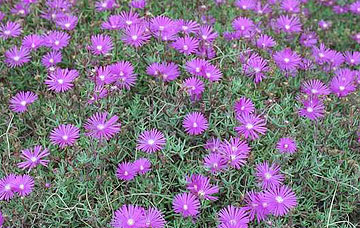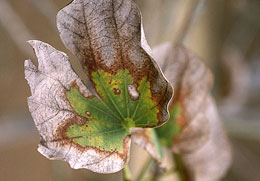Salinity Management Guide

A salt tolerant plant
More on the osmotic effects of salt
Due to osmosis, water naturally moves from an area containing less salt to an area containing more salt. The more salt that accumulates in the soil from irrigation and natural occurrence, the more energy that a plant must expend to draw water from the soil into its roots. This diverts some of the energy that a plant otherwise would use to survive and grow. If salt in the water within reach of a plant's roots does not exceed the amount tolerated by the plant, then there is no harm.
If the salt does exceed that amount, then the plant eventually becomes adversely affected, sometimes to the point of injury and, in extreme cases, death.

Plant exhibiting symptoms of being affected by salt
Symptoms of injury don't appear immediately, but in stages. Stunted growth and yellowed leaves are the first signs that salt has exceeded the amount a plant can tolerate. In broad-leafed species, the second stage involves leaves dying, followed by leaves dropping off. In conifers, the second stage involves needles turning brown, followed by needles dropping off.
Typically, the margins and tips of older leaves — where salt accumulates the most — are the most severely affected, while new leaves are the least affected.
| « Previous page | Next page » |